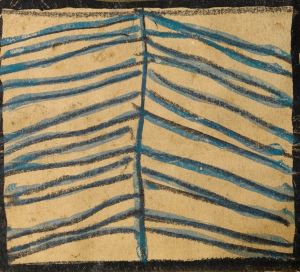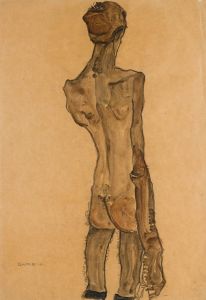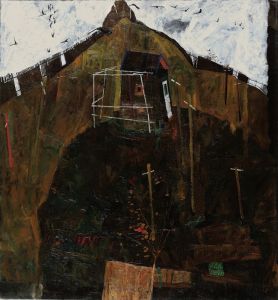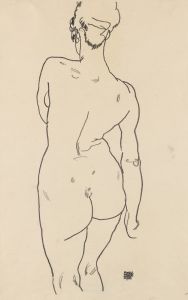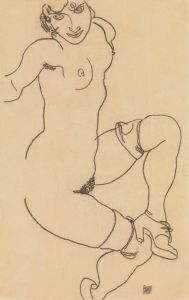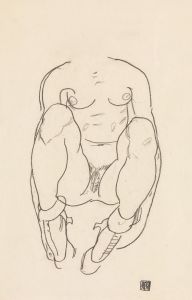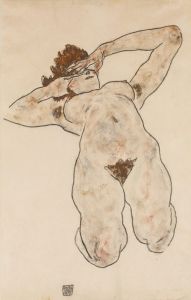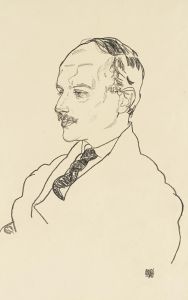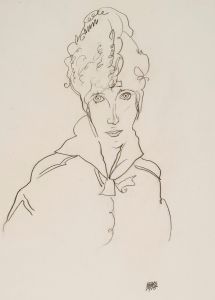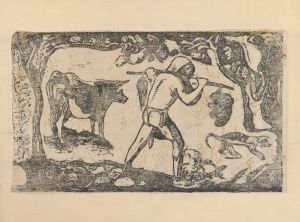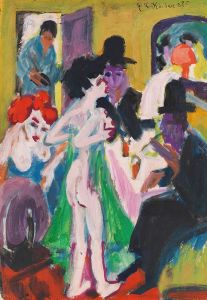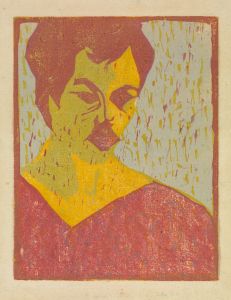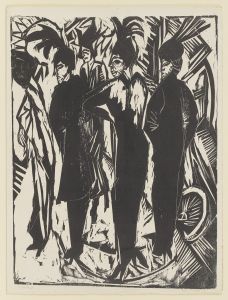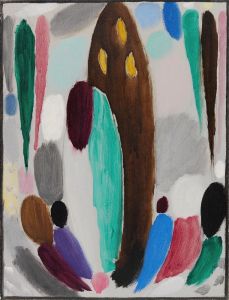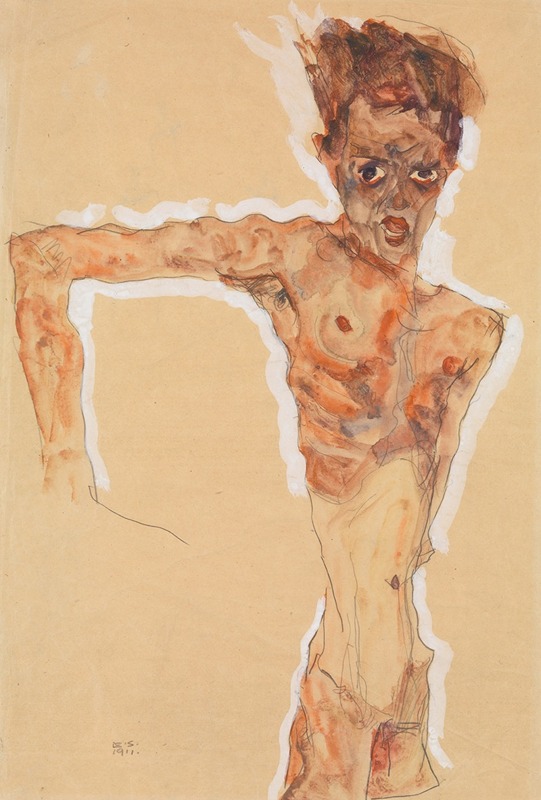
Self-Portrait
A hand-painted replica of Egon Schiele’s masterpiece Self-Portrait, meticulously crafted by professional artists to capture the true essence of the original. Each piece is created with museum-quality canvas and rare mineral pigments, carefully painted by experienced artists with delicate brushstrokes and rich, layered colors to perfectly recreate the texture of the original artwork. Unlike machine-printed reproductions, this hand-painted version brings the painting to life, infused with the artist’s emotions and skill in every stroke. Whether for personal collection or home decoration, it instantly elevates the artistic atmosphere of any space.
Egon Schiele, an Austrian painter known for his intense and raw expressionist works, created several self-portraits throughout his career. Schiele's self-portraits are notable for their psychological depth and unflinching exploration of the human condition. Born in 1890, Schiele was a protégé of Gustav Klimt and became one of the leading figures of Austrian Expressionism. His work is characterized by its bold lines, stark compositions, and often provocative subject matter.
Schiele's self-portraits are a significant part of his oeuvre, reflecting his introspective nature and his interest in exploring identity and the human psyche. These works often depict the artist in contorted poses, with exaggerated features and a haunting gaze. Schiele's use of line and color in these portraits is distinctive, often employing a limited palette to emphasize the emotional intensity of the subject.
One of Schiele's notable self-portraits is "Self-Portrait with Physalis," created in 1912. In this work, Schiele presents himself with a direct and confrontational gaze, surrounded by the delicate, lantern-like forms of physalis plants. The contrast between the fragile plants and Schiele's intense expression highlights the tension between vulnerability and strength, a recurring theme in his work. The painting is marked by Schiele's characteristic use of sharp lines and a muted color palette, which serve to focus attention on the psychological complexity of the subject.
Schiele's self-portraits often explore themes of existential angst and self-reflection. His works are imbued with a sense of urgency and introspection, capturing the artist's inner turmoil and his quest for self-understanding. Schiele's approach to self-portraiture was innovative for its time, breaking away from traditional representations of the self and instead offering a raw and unfiltered glimpse into the artist's inner world.
Throughout his career, Schiele faced both acclaim and controversy. His works were often criticized for their explicit content and perceived immorality, leading to legal troubles and public outcry. Despite this, Schiele remained committed to his artistic vision, continuing to push the boundaries of expression and challenging societal norms.
Schiele's life was tragically cut short when he died in 1918 at the age of 28, a victim of the Spanish flu pandemic. Despite his brief career, Schiele left a lasting impact on the art world, influencing generations of artists with his bold and emotive style. His self-portraits, in particular, continue to be celebrated for their psychological depth and their unflinching exploration of the human condition.
Today, Egon Schiele's self-portraits are housed in major art collections around the world, including the Leopold Museum in Vienna, which holds the largest collection of his works. These portraits remain a testament to Schiele's extraordinary talent and his enduring legacy as one of the most important figures in early 20th-century art.





